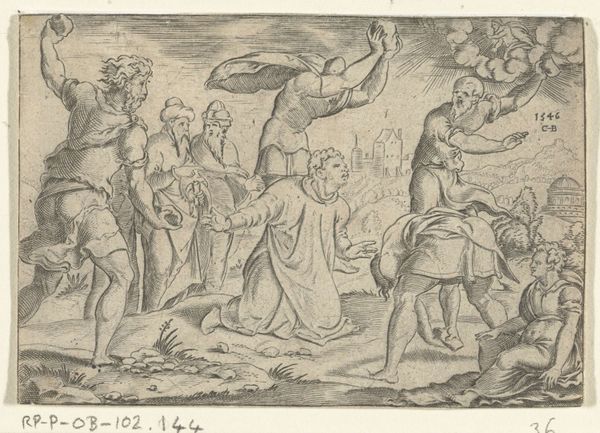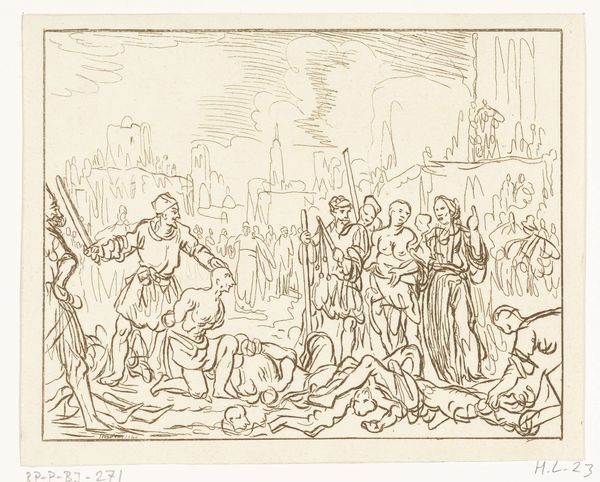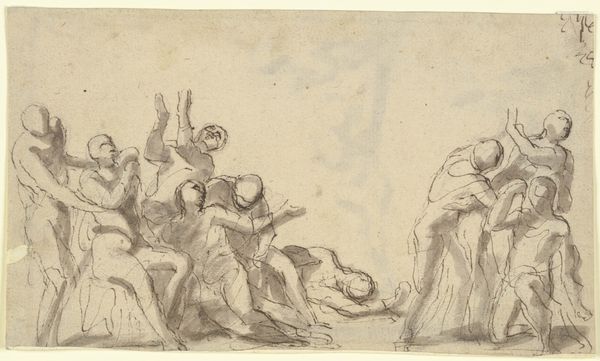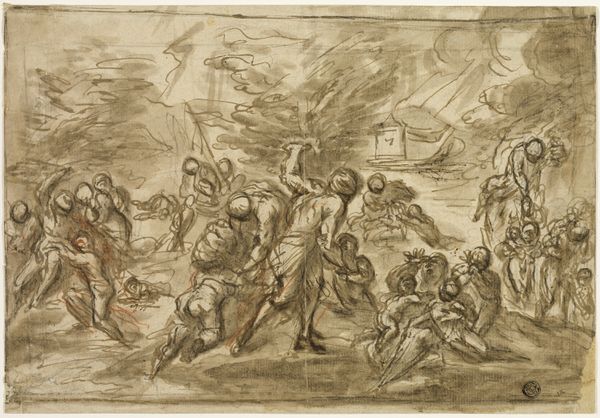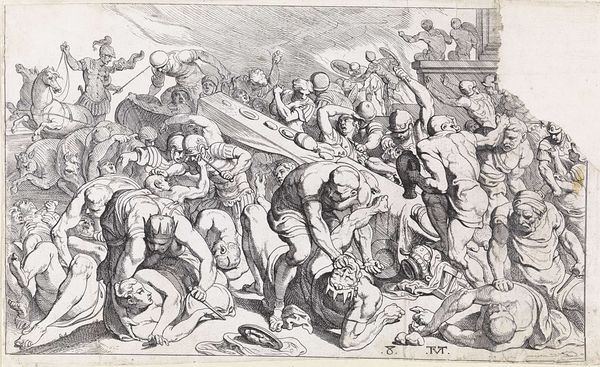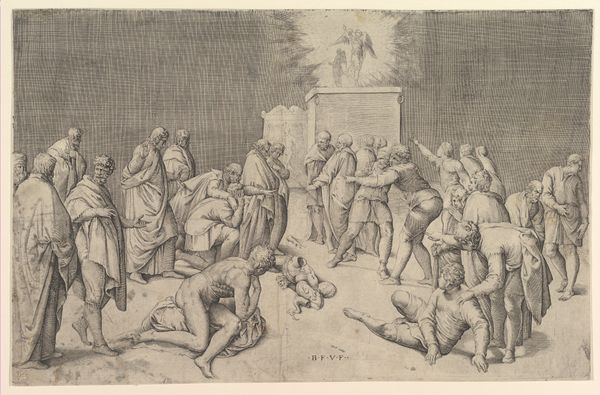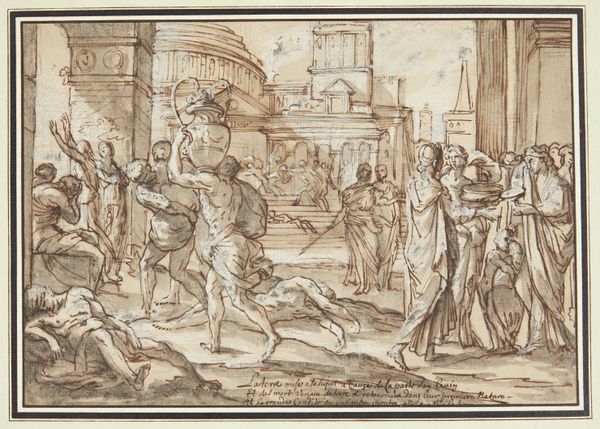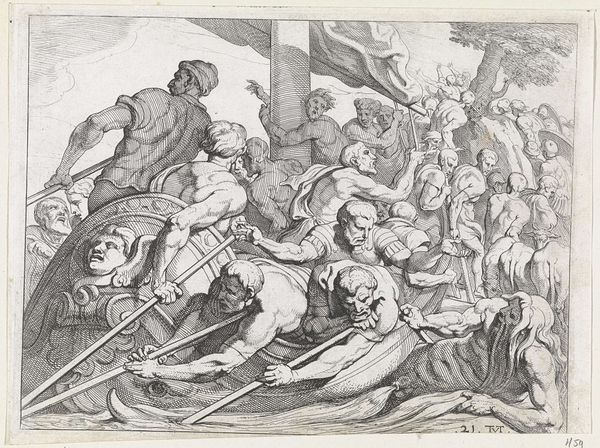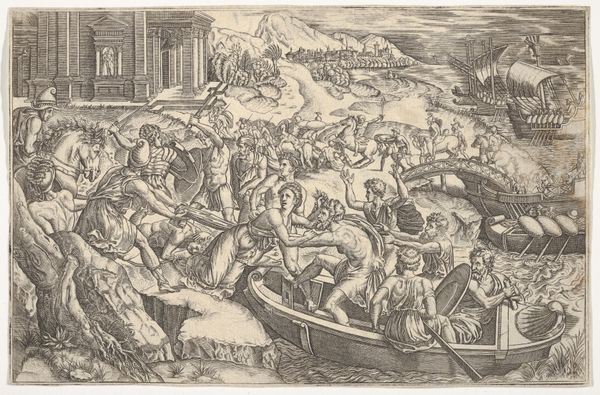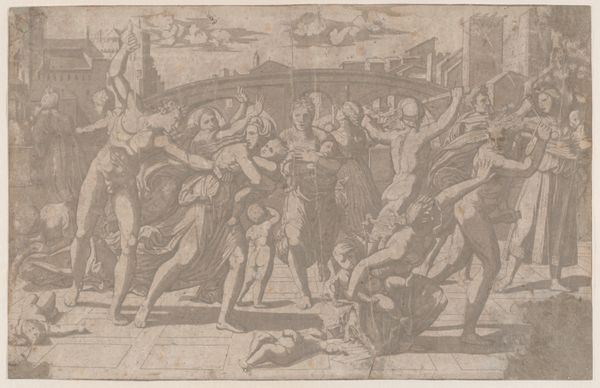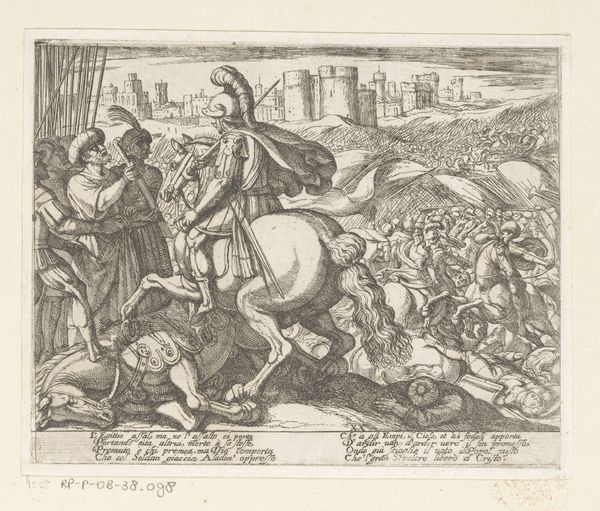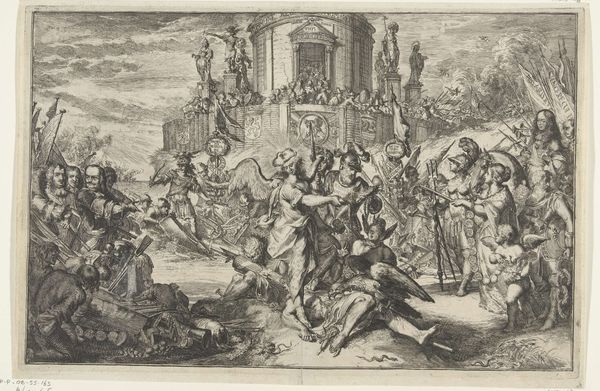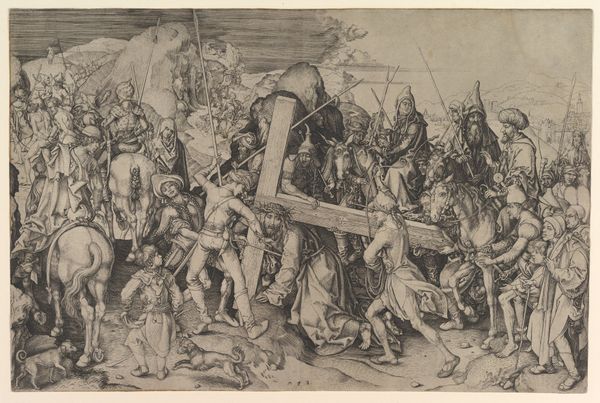
drawing, paper, ink, chalk
#
drawing
#
baroque
#
figuration
#
paper
#
ink
#
ink drawing experimentation
#
chalk
#
genre-painting
#
history-painting
#
italian-renaissance
Copyright: Public Domain
Editor: Here we have a drawing titled "Kampf der Horatier und Curiatier" whose date is unknown, by Pietro da Cortona. It’s rendered in ink and chalk on paper and depicts a battle scene. I’m immediately struck by the dramatic intensity and the figures’ dynamic poses, but I'm curious: How do you interpret this work in its historical context? Curator: This drawing presents an opportunity to dissect the narratives of heroism and sacrifice often employed to justify state violence. Consider the story it depicts: a conflict between Rome and Alba Longa, resolved by a staged battle between three brothers from each city. This moment, fraught with violence and patriarchal notions of honor, demands that we question whose stories are valorized and whose are erased. Do you notice anything about the figures in the background versus those fallen in the foreground? Editor: I see what you mean. The background figures seem to be observing passively, almost like spectators in a theater, while the foreground is filled with the brutal consequences of the spectacle. It feels incredibly staged, doesn't it? Curator: Precisely. And doesn't this staging remind you of similar conflicts across history, real and fictionalized, used to rally support or demonize the "other?" This piece offers a critical lens for analyzing the performative aspects of power and the cost of upholding potentially harmful ideological divides, even today. To push you even more: consider how gender roles play into this display of power and virility. Who is missing from the battlefield and why? Editor: That’s fascinating! I hadn't considered the theatrical and political implications so deeply. The absence of women on the battlefield is definitely notable, highlighting the exclusively male sphere of conflict and decision-making. This adds another layer to understanding the drawing's commentary on power dynamics. Curator: Exactly. Analyzing art in relation to the narratives they promote – and who those narratives exclude – is crucial for understanding art’s role in shaping cultural values. Editor: I'm leaving with a deeper awareness of the subtle ways art reflects and reinforces power structures, thank you.
Comments
No comments
Be the first to comment and join the conversation on the ultimate creative platform.
